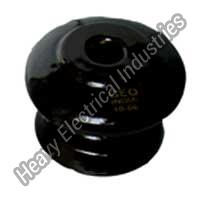

Materials that lack electron conduction are insulators if they lack other mobile charges as well. However, it is usually accompanied by physical or chemical changes that permanently degrade the material's insulating properties. Once this voltage is exceeded the material ceases being an insulator, and charge begins to pass through it. There is always some voltage (called the breakdown voltage) that gives electrons enough energy to be excited into this band. This occurs because the "valence" band containing the highest energy electrons is full, and a large energy gap separates this band from the next band above it. Most (though not all, see Mott insulator) insulators have a large band gap. If no such states are available, the material is an insulator. This allows electrons to gain energy and thereby move through a conductor such as a metal. Electronic band theory (a branch of physics) dictates that a charge flows if states are available into which electrons can be excited. 4 Telegraph and power transmission insulatorsĮlectrical insulation is the absence of electrical conduction.They support the weight of the suspended wires without allowing the current to flow through the tower to ground. The term insulator is also used more specifically to refer to insulating supports used to attach electric power distribution or transmission lines to utility poles and transmission towers.

An insulating material used in bulk to wrap electrical cables or other equipment is called insulation. Insulators are used in electrical equipment to support and separate electrical conductors without allowing current through themselves. Examples include rubber-like polymers and most plastics which can be thermoset or thermoplastic in nature. A much larger class of materials, even though they may have lower bulk resistivity, are still good enough to prevent significant current from flowing at normally used voltages, and thus are employed as insulation for electrical wiring and cables. Some materials such as glass, paper and PTFE, which have high resistivity, are very good electrical insulators. This is known as the breakdown voltage of an insulator. In addition, all insulators become electrically conductive when a sufficiently large voltage is applied that the electric field tears electrons away from the atoms. The most common examples are non-metals.Ī perfect insulator does not exist because even insulators contain small numbers of mobile charges ( charge carriers) which can carry current. The property that distinguishes an insulator is its resistivity insulators have higher resistivity than semiconductors or conductors.

Other materials- semiconductors and conductors-conduct electric current more easily. The atoms of the insulator have tightly bound electrons which cannot readily move. Three-core copper wire power cable, each core with an individual colour-coded insulating sheath, all contained within an outer protective sheathĪn electrical insulator is a material in which electric current does not flow freely.


 0 kommentar(er)
0 kommentar(er)
